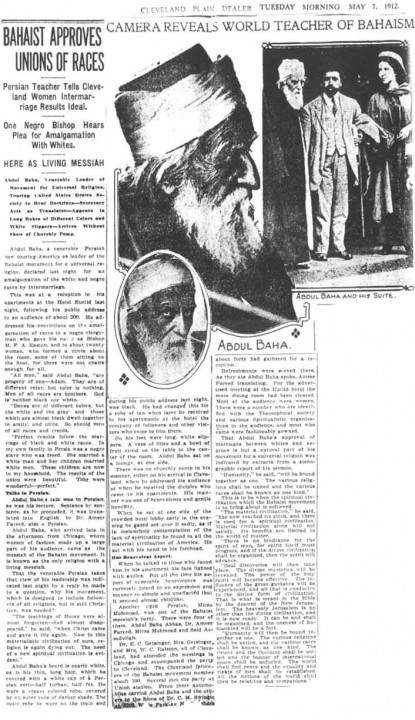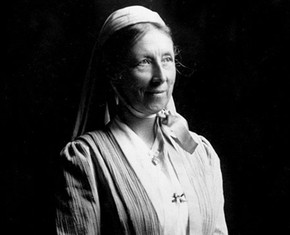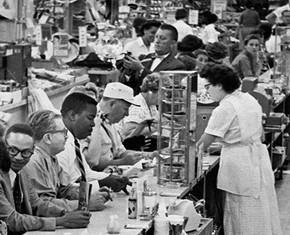The views expressed in our content reflect individual perspectives and do not represent the authoritative views of the Baha'i Faith.
Slavery—practically ubiquitous throughout history—continued until the abolitionist movements in the nineteenth and early twentieth centuries put an end to most forms of it. Vestiges remain today, such as human trafficking for “sexual tourism” and forced temporary “marriage” (sexual slavery) as practiced today by the so-called Islamic State under the guise of the “spoils of war” doctrine.

Slavery existed in nineteenth-century Iran as well. Readers will recall, in previous articles in this series, that, in 1839, Baha’u’llah liberated the slaves in his father’s household. Given the freedom to leave and pursue their new-found destinies elsewhere, some of these servants chose to remain within the very society and environment so familiar to them, and to which they had become accustomed. This, in turn, would have some remarkable ramifications, including racial intermarriage, and the fruits of those ideal unions.
In the evening of Monday, May 6, 1912 in Cleveland, Ohio, Abdu’l-Baha spoke at a reception at the Hotel Euclid. In his public address, Abdu’l-Baha delivered his message to an audience of around 200 people.
The room filled to capacity. Some had to sit on the floor. Among the audience members was an African American clergyman, Bishop M. F. A. Easton. Evidently, this was a remarkable fact, taking into account the venue and others who were present. Black and white audiences rarely mixed in those days. In the May 7, 1912 edition of the Cleveland Plain Dealer, a story of that event was published with this headline:
Bahaist Approves Union of Races. Persian Teacher Tells Cleveland Women Interracial Results Ideal. One Negro Bishop Hears Plea for Amalgamation With Whites . . . Abdul Baha, Venerable Leader of Movement for Universal Religion, Touring United States Draws Society to Hear Doctrines—Secretary Acts as Translator—Appears in Long Robes of Different Colors and White Slippers—Arrives Without Show of Churchly Pomp
This was sure to be controversial during the Jim Crow era, even in the North. The reporter sets the scene:
For the advertised meeting at the Euclid hotel the main dining room had been cleared. Most of the audience were women… and most who came were fashionably gowned.
Space does not permit a description here of Abdu’l-Baha’s entire talk, as recorded in contemporaneous “stenographic notes,” but one highlight of that historic talk was this socially remarkable statement:
Perfect results follow the marriage of black and white races. In my own family in Persia was a negro slave who was freed. She married a white man and her children married white men. These children are now in my household. The results of the union were beautiful. They were wonderful—perfect.
Just imagine what impact this message had on the “fashionably gowned” white women of 1912 Cleveland. I presume that African American clergyman, Bishop M. F. A. Easton, was struck by that statement as well—favorably so, I’d imagine.
The historian in me had to know: “Who was Abdu’l-Baha talking about?” To find out, we have to transport ourselves from West to East, from Cleveland to Haifa. Evidently, Abdu’l-Baha was speaking of a certain “Habibih Khanum,” whom Abdu’l-Baha mentions in this passage:
Muhammad-Ibrahim Amir came from Nayriz. He was a blessed person; he was like a cup filled with the red wine of faith. At the time when he was first made captive by the tender Loved One, he was in the flower of his youth. Then he fell a prey to the oppressors, and following the upheaval in Nayriz and all the suffering, his persecutors laid hold of him. Three farrashes pinned his arms and tied his hands behind him; but the Amir by main strength burst his bonds, snatched a dagger from a farrash’s belt, saved himself and ran away to Iraq. There he engaged in writing down the sacred verses and later won the honor of serving at the Holy Threshold. Constant and steadfast, he remained on duty day and night. During the journey from Baghdad to Constantinople, from there to Adrianople, and from there to the Most Great Prison, he was always at hand to serve. He married the handmaid of God, Habibih, who also served at the Threshold, and his daughter Badí‘ih became the helpmeet of the late Husayn-Aqa Qahvih-chi. – Abdu’l-Baha, Memorials of the Faithful, p. 94.
To make a long story short, Badí‘ih had six children: three sons (Atau’llah, Muhammad and Ahmad) and three daughters (Fatimih, Zaynab and Hubur). The oldest daughter, Fatimih, married Mirza Ali-Akbar Nakhjavani. They had two sons: Jalal and Aliyu’llah, who was known as Ali Nakhjavani, a distinguished member of the Universal House of Justice, when first elected in April 1963!
Based on this one real-life example alone, we can see the truth of Abdu’l-Baha’s statement: “Perfect results follow the marriage of black and white races.”
On that memorable evening, Abdu’l-Baha made another remarkable statement, regarding the destiny of America:
This revered American nation presents evidences of greatness and worth. It is my hope that this just government will stand for peace so that warfare may be abolished throughout the world and the standards of national unity and reconciliation be upraised. This is the greatest attainment of the world of humanity. This American nation is equipped and empowered to accomplish that which will adorn the pages of history, to become the envy of the world and be blest in the East and the West for the triumph of its democracy. I pray that this may come to pass, and I ask the blessing of God in behalf of you all. – Abdu’l-Baha, The Promulgation of Universal Peace, p. 103.
Toward the end of his article, the Plain Dealer reporter tells us that Abdu’l-Baha then went to the Sanatorium of Dr. C. M. Swingle, where “refreshments were served.” And: “As they ate, Abdu’l-Baha spoke, Ameer Fareed translating.” This, in part, is what Abdu’l-Baha said:
This is a beautiful city; the climate is pleasant; the views are charming. All the cities of America seem to be large and beautiful, and the people appear prosperous. The American continent gives signs and evidences of very great advancement; its future is even more promising, for its influence and illumination are far-reaching, and it will lead all nations spiritually. – Ibid., p. 104 (emphasis added).
The Cleveland Plain Dealer reporter also noted that Abdu’l-Baha stated that, in the future, “the various races shall be known as one kind.”
You can read more about the Baha’i teachings on the destiny of America in Chapter 12 of my book, God and Apple Pie: Religious Myths and Visions of America, with an Introduction by J. Gordon Melton, Distinguished Professor of American Religious History, Baylor University.
You May Also Like
Comments

















1-Speaking of slavery as if it is a thing of the past. The WASPy ethnocentricity of this theme is saddening and blind to the facts. Directly and indirect slavery is an issue that needs to be spoken about. This concept is brought out in the great quiz showing how many slaves that EACH of us "employ" : http://slaveryfootprint.org
Secondly, there is a great rap video on this topic that sums up our consciousness is a beautiful way: ...it may be hard to follow and there are settings on the youtube screen to turn on https://www.youtube.com/watch?v=W4nSjPdT788
2- The second myopic view perpetuated in the above article is to speak of "races" so incorrectly. We are all ONE race already; the human race. Genetically , scientifically, spiritually, mentally. WE....ARE... ONE.... RACE. Even when we speak of colour of skin (the most obvious "difference" between our brothers and sisters) we are looking in the wrong direction. We need to look into that other human being's eyes, see the soul within. Man , woman, boy , girl: we are already one, we are already perfect. Love each other as we exist now.
The article above perpetuates the illusions that divide, not bring us together.
With Respect.
Jayeson